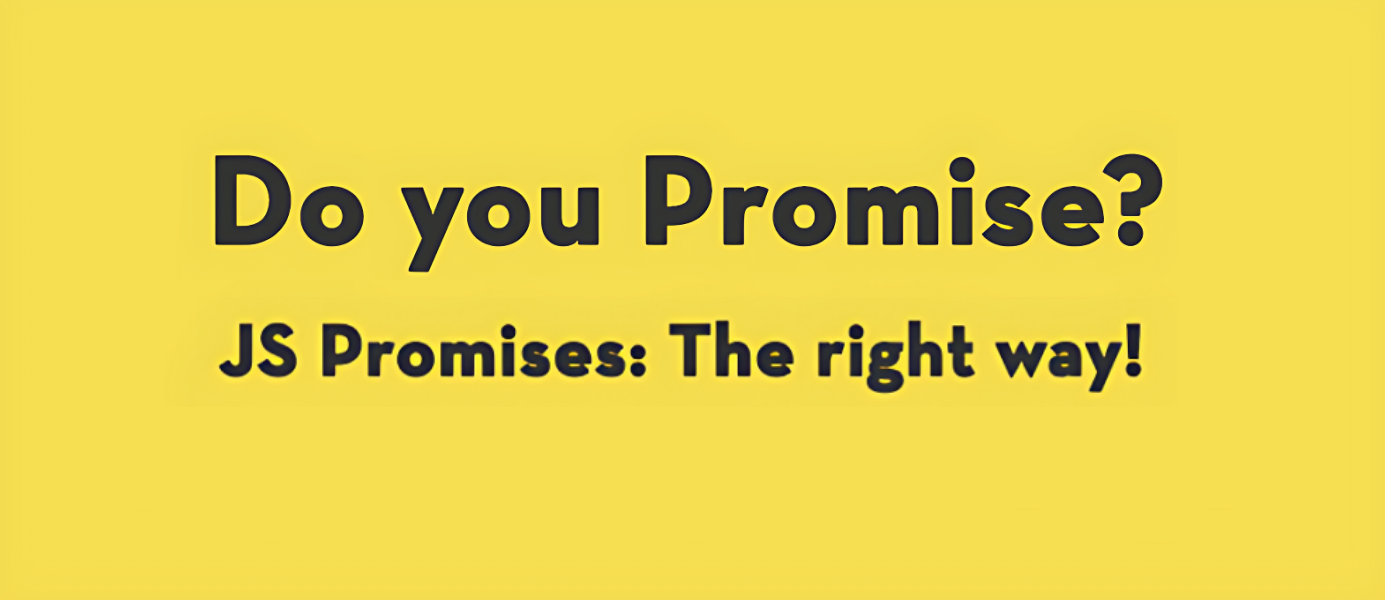JavaScript Promises: Transform Your Asynchronous Code Today!
 Harish Kumar
Harish Kumar
A JavaScript Promise is an object that represents the eventual completion (or failure) of an asynchronous operation and its resulting value. Promises provide a cleaner and more intuitive way to work with asynchronous code compared to traditional callback-based approaches.
👉Download Javascript: from ES2015 to ES2023 - eBook
Key Concepts
States: A Promise has three states:
Pending: The initial state, neither fulfilled nor rejected.
Fulfilled: The operation completed successfully.
Rejected: The operation failed.
Creating a Promise:
const myPromise = new Promise((resolve, reject) => { // Asynchronous operation if (/* operation successful */) { resolve('Success!'); } else { reject('Error!'); } });Using Promises:
then: Attaches callbacks for the fulfilled case and the rejected case.catch: Attaches a callback for the rejected case.finally: Attaches a callback that is executed regardless of the promise's outcome.
myPromise
.then((value) => {
console.log(value); // "Success!"
})
.catch((error) => {
console.error(error); // "Error!"
})
.finally(() => {
console.log('Operation completed');
});
Promises in Action
Basic Example
Here's a simple example of using a Promise to simulate an asynchronous operation:
const fetchData = () => {
return new Promise((resolve, reject) => {
setTimeout(() => {
const success = true; // Simulate success or failure
if (success) {
resolve('Data fetched successfully!');
} else {
reject('Failed to fetch data.');
}
}, 2000);
});
};
fetchData()
.then((message) => console.log(message))
.catch((error) => console.error(error));
Chaining Promises
Promises can be chained to handle a sequence of asynchronous operations:
const step1 = () => Promise.resolve('Step 1 complete');
const step2 = () => Promise.resolve('Step 2 complete');
const step3 = () => Promise.resolve('Step 3 complete');
step1()
.then((result1) => {
console.log(result1);
return step2();
})
.then((result2) => {
console.log(result2);
return step3();
})
.then((result3) => {
console.log(result3);
})
.catch((error) => {
console.error(error);
});
Advanced Usage
Promise.all
Executes multiple promises in parallel and waits for all of them to be resolved or any of them to be rejected:
const promise1 = Promise.resolve('Promise 1 resolved');
const promise2 = Promise.resolve('Promise 2 resolved');
const promise3 = Promise.resolve('Promise 3 resolved');
Promise.all([promise1, promise2, promise3])
.then((values) => {
console.log(values); // ['Promise 1 resolved', 'Promise 2 resolved', 'Promise 3 resolved']
})
.catch((error) => {
console.error(error);
});
Promise.race
Waits for the first promise to be settled (resolved or rejected):
const promise1 = new Promise((resolve) => setTimeout(resolve, 500, 'First'));
const promise2 = new Promise((resolve) => setTimeout(resolve, 100, 'Second'));
Promise.race([promise1, promise2])
.then((value) => {
console.log(value); // 'Second'
})
.catch((error) => {
console.error(error);
});
Conclusion
JavaScript Promises offer a powerful way to handle asynchronous operations, making the code more readable and maintainable. By understanding and utilizing Promises effectively, developers can write cleaner and more efficient asynchronous code.
Subscribe to my newsletter
Read articles from Harish Kumar directly inside your inbox. Subscribe to the newsletter, and don't miss out.
Written by

